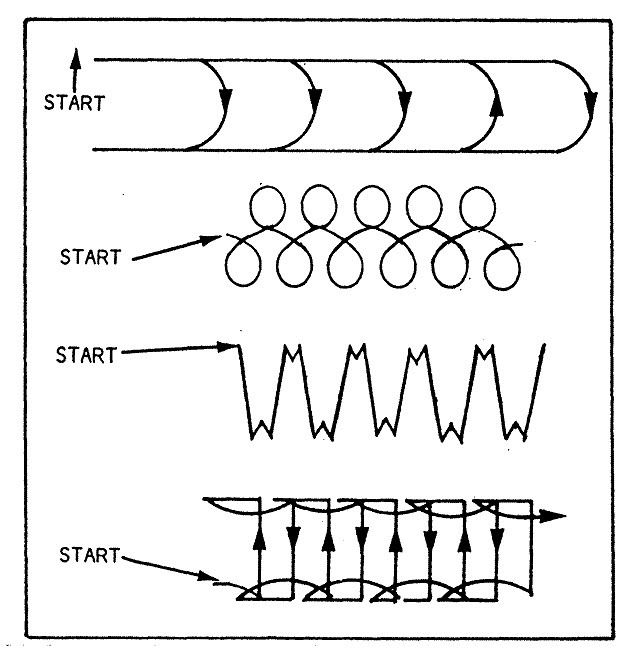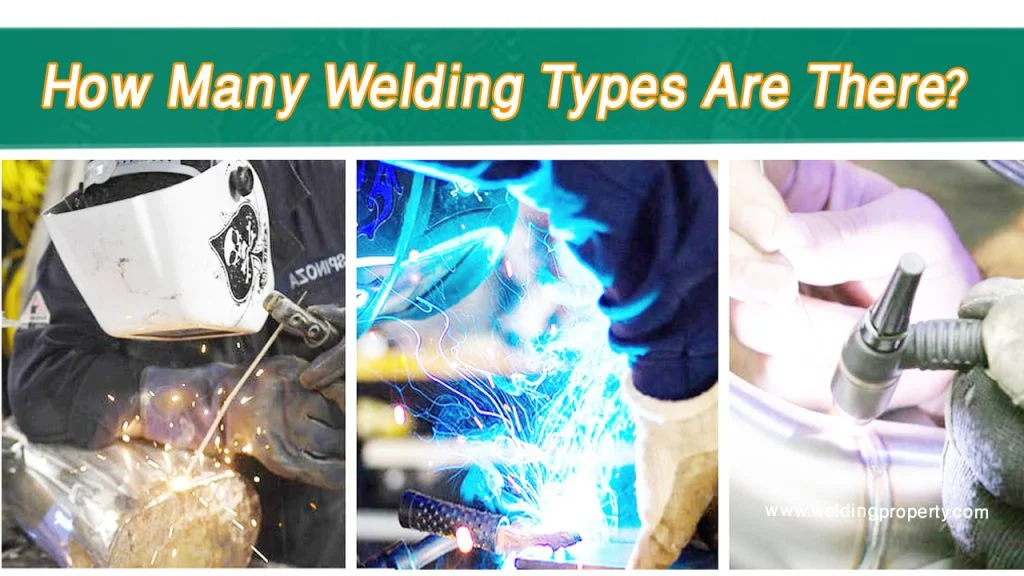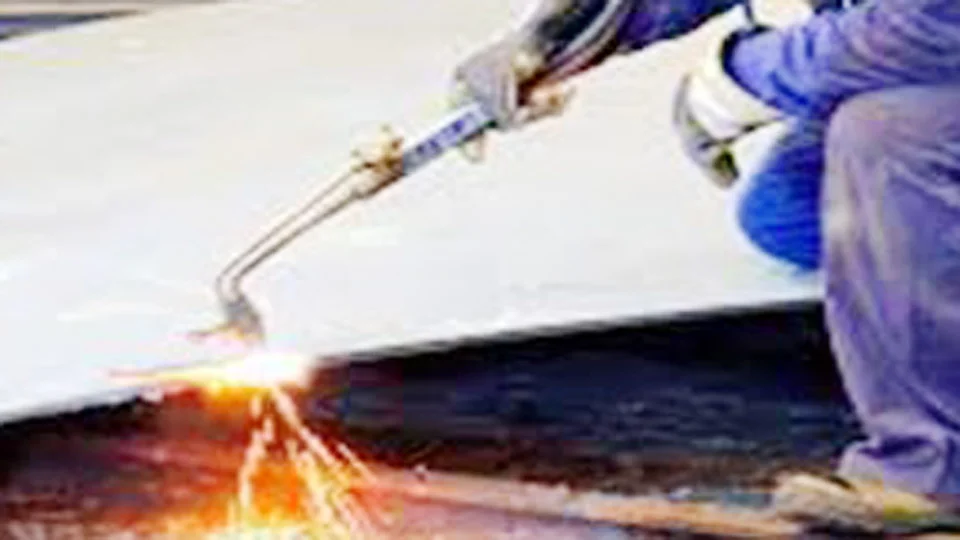Welding can be a rewarding skill to learn. It opens doors to various projects.
Whether you want to fix things at home or start a career, knowing the best welding techniques is crucial. Beginners often feel overwhelmed by the many methods available. It’s easy to get lost in the technical terms and tools. But don’t worry.
This guide will break down the best welding techniques for those just starting. You’ll learn which methods are easiest to pick up and what tools you need. We will also cover safety tips to keep you protected. By the end, you will have a solid foundation to begin your welding journey confidently. Let’s dive in!

Credit: m.youtube.com
Introduction To Welding
Welding is a skill that brings metal pieces together by heating them to a point where they melt and fuse. It’s like crafting with metal, creating everything from small art pieces to large structures. For beginners, understanding the basics of welding can open doors to many projects and maybe even a new career. Let’s dive into the essentials of welding and get you started on this exciting journey!
Importance Of Welding Skills
Why should you learn welding? Here are a few reasons:
- Job Opportunities: Welders are always in demand in industries like construction, automotive, and manufacturing.
- Versatility: Welding skills can be used for repairs, custom builds, and creative projects.
- Self-Sufficiency: With welding skills, you can fix and make things on your own, saving money and time.
Welding is not just a skill; it’s a superpower that lets you shape and create with metal. Imagine the pride of fixing a broken gate or building a sturdy table from scratch!
Basic Welding Terminology
As a beginner, it’s crucial to understand some common welding terms. Here’s a quick glossary to get you started:
| Term | Definition |
|---|---|
| Arc | The electric current that flows between the electrode and the metal being welded, creating heat. |
| Electrode | A rod or wire that conducts the welding current and can be either consumable or non-consumable. |
| Shielding Gas | Gas used to protect the weld from contamination by the atmosphere. |
| Weld Pool | The molten metal created during the welding process. |
| Weld Bead | The continuous line of metal deposited during welding. |
Now, these terms might seem a bit technical, but trust me, once you start welding, they’ll become second nature. Think of it like learning the lingo of a new hobby—it makes the whole process smoother and more enjoyable!
Safety First
Welding is a rewarding skill. But safety must come first. It helps prevent injuries and ensures a smooth learning experience. Understanding the basics of welding safety is essential. Let’s dive into the most important aspects of welding safety for beginners.
Essential Safety Gear
Wearing the right safety gear is crucial. A welding helmet protects your eyes and face. It shields you from sparks and bright light. Safety glasses add an extra layer of protection. Gloves are a must. They prevent burns and electrical shock. Choose flame-resistant clothing. It reduces the risk of burns. Boots with steel toes protect your feet from falling objects. Earplugs can protect your hearing from loud noises.
Common Welding Hazards
Welding has many hazards. One common hazard is electric shock. Always check your equipment for damage. Another hazard is toxic fumes. Work in a well-ventilated area. Burns are also a risk. Sparks and hot metal can cause severe injuries. Eye injuries from bright light and flying debris are common. Always wear your helmet and safety glasses. Fire is a significant risk. Keep a fire extinguisher nearby. Know how to use it in case of an emergency.
Types Of Welding
Learning the best welding techniques can be exciting for beginners. Different types of welding offer unique benefits and challenges. Understanding these types helps you choose the right one for your projects.
Mig Welding
MIG welding is one of the easiest types for beginners. It uses a wire that feeds through the welding gun. This wire acts as both the electrode and filler material. MIG welding is great for welding thin materials. It’s fast and produces clean welds with little spatter. It’s commonly used in automotive and home projects.
Tig Welding
TIG welding offers more precision and control. It uses a tungsten electrode that does not melt. A separate filler rod is used for the weld. TIG welding is ideal for thin materials and non-ferrous metals like aluminum. It requires more skill and practice than MIG welding. The results are often cleaner and more visually appealing.
Stick Welding
Stick welding is versatile and can be used outdoors. It uses a stick electrode that melts to join metals. This type is good for thicker materials. It is less affected by wind and can weld on rusty or dirty surfaces. Stick welding is a bit harder to learn but is very useful for heavy-duty projects.

Credit: www.wcwelding.com
Choosing The Right Equipment
Choosing the right equipment is crucial for beginners in welding. Proper tools make the learning process smoother and safer. Using the correct equipment ensures quality work and reduces frustration. Let’s explore the best welding machines and basic tools for beginners.
Welding Machines For Beginners
Welding machines come in various types. The most beginner-friendly is the MIG welder. MIG welders are easy to use and control. They are suitable for a wide range of projects. Stick welders are another option. They are more affordable and versatile. TIG welders are precise but require more skill. Beginners might find them challenging to use initially.
Basic Welding Tools
A good welding helmet is essential. It protects your eyes and face from sparks. Auto-darkening helmets are convenient and safe. Welding gloves are also important. They shield your hands from heat and burns. Make sure they are heat-resistant and flexible. A welding jacket or apron provides additional protection. It keeps your clothes and skin safe from sparks and heat.
Welding clamps hold your workpieces in place. They ensure accuracy and safety. A wire brush cleans the weld area. Clean surfaces result in stronger welds. An angle grinder smooths rough edges and finishes welds. It is a versatile tool for any welding project. A chipping hammer removes slag from the weld. This tool is especially useful for stick welding.
Preparing Your Workspace
Preparing your workspace is crucial for successful welding. A well-organized area ensures safety and efficiency. Let’s dive into how to set up your welding area and organize your tools and materials.
Setting Up A Welding Area
Choose a well-ventilated space. Good ventilation keeps fumes away. Clear the area of any flammable items. This reduces fire risks. Use a welding table made of metal. It provides a stable and safe surface.
Ensure you have proper lighting. Good lighting helps you see your work clearly. Set up a fire extinguisher nearby. Safety first! Use welding curtains to protect others from sparks.
Organizing Tools And Materials
Keep your tools within reach. This saves time during welding. Arrange them in a tool rack. It keeps your space tidy. Store welding rods in a dry place. Moisture can damage them.
Label your materials. It helps you find them quickly. Use a cart for heavy items. It makes moving them easier. Regularly check your tools. Ensure they are in good working condition.
Basic Welding Techniques
Welding might look complicated, but with a little practice, you can get the hang of it! In this section, we’ll cover some basic welding techniques that every beginner should know. These include striking an arc, creating a bead, and controlling heat. Mastering these skills will set you on the path to becoming a proficient welder. Let’s dive in!
Striking An Arc
Striking an arc is the first step in welding. Think of it as turning on the light before you start reading a book. It’s the moment when you create the spark to start welding. Here’s a simple way to do it:
- Touch and lift: Touch the tip of the electrode to the metal surface briefly, then lift it quickly.
- Scratch method: Imagine striking a match. Lightly drag the electrode across the metal surface until it sparks.
Remember to keep your hand steady and wear your safety gear. Practice makes perfect, so don’t be discouraged if it takes a few tries to get it right!
Creating A Bead
Once you’ve struck the arc, the next step is to create a bead. A bead is the line of melted metal that forms the weld. Here’s how you can create a good bead:
- Steady movement: Move the electrode steadily along the joint. A smooth, even movement will create a consistent bead.
- Right speed: Don’t go too fast or too slow. Aim for a pace that melts the metal just enough to form a solid bond.
- Angle: Hold the electrode at a slight angle, about 10 to 15 degrees. This helps guide the molten metal into the joint.
Creating a bead is like drawing a line with a pen. It takes practice to get it straight and even, but with time, you’ll improve!
Controlling Heat
Heat control is crucial in welding. Too much heat can burn through the metal, while too little heat won’t fuse the pieces properly. Here are some tips to control heat effectively:
- Adjust your machine: Set the amperage based on the thickness of the metal. Thicker metals need more heat.
- Watch the puddle: The molten metal (or puddle) should be smooth and shiny. If it’s too runny, reduce the heat. If it’s sluggish, increase the heat.
- Travel speed: Adjust your movement speed to control the heat. Moving too fast can reduce the heat, while moving too slow can increase it.
Think of controlling heat like cooking on a stove. You need just the right temperature to get the perfect dish. With these tips, you’ll be able to manage the heat and create strong welds.
As you practice these basic welding techniques, remember to stay patient and keep safety in mind. Welding is an art and science, and with dedication, you’ll master it in no time!
Practice Makes Perfect
Welding can seem challenging for beginners. But like any skill, practice makes perfect. Consistent effort helps improve technique and build confidence. As you practice, you will see significant progress in your welding skills.
Beginner Welding Projects
Start with simple projects. These will help you get used to the welding process. Try making small items like a metal box or a simple frame. These projects are not too complex and provide a good starting point. You can also create garden tools or simple sculptures. These projects are fun and practical.
Tips For Improving Skills
Always wear the proper safety gear. This protects you while you practice. Keep a steady hand while welding. This ensures cleaner welds. Watch your welding speed. Moving too fast or too slow affects the quality. Focus on maintaining a consistent speed.
Pay attention to the angle of your welding torch. The right angle is crucial. Practice on scrap metal pieces. This allows you to make mistakes without wasting materials. Join a welding class or workshop. Learning from experts can provide valuable tips.
Troubleshooting Common Issues
Even seasoned welders face issues during welding. Beginners often encounter common problems that can make the process frustrating. Troubleshooting these issues is essential for improving your welding skills and ensuring strong, clean welds. Let’s explore some common problems and how to address them.
Poor Penetration
Poor penetration occurs when the weld does not fuse properly with the base metal. This can weaken the weld and lead to failures. To fix this, check your welding speed. Moving too fast can prevent proper fusion. Ensure your voltage and amperage settings are correct for the material thickness. Lastly, clean the metal surface thoroughly before welding to remove any contaminants.
Excessive Spatter
Excessive spatter makes the weld look unclean and requires extra cleanup. It often results from incorrect settings or technique. Adjusting your voltage and amperage can reduce spatter. Ensure the electrode stick-out is not too long. Also, maintaining a consistent travel speed helps minimize spatter. Using anti-spatter spray can also be beneficial.
Cracks And Porosity
Cracks and porosity weaken the weld and can lead to failures. Cracks often result from rapid cooling or high levels of stress in the weld area. To prevent this, control the cooling rate by preheating the metal if needed. Porosity usually occurs due to contaminants or improper shielding gas. Clean the metal thoroughly and ensure proper gas flow. Check for leaks in the gas hose and make sure the nozzle is clean.
Resources For Continued Learning
Starting out in welding can be both exciting and daunting. With so many techniques and tools, it’s easy to feel overwhelmed. But don’t worry! Learning to weld is a journey, and there are plenty of resources to help you along the way. Whether you prefer hands-on learning or online guidance, there’s something for everyone. Let’s dive into some of the best resources for beginners to continue their welding education.
Welding Courses And Workshops
One of the most effective ways to learn welding is by attending courses and workshops. These provide hands-on experience, allowing you to learn directly from professionals.
- Community Colleges: Many offer evening classes for beginners. Check your local college for welding courses.
- Trade Schools: These schools specialize in trades and often have comprehensive welding programs.
- Workshops: Look for weekend workshops in your area. These are perfect for getting a taste of welding without a long-term commitment.
Online Tutorials And Communities
If you prefer learning at your own pace, online resources can be incredibly helpful. The internet is a treasure trove of welding knowledge, offering tutorials, videos, and forums.
| Resource | Description |
|---|---|
| YouTube Channels: | Channels like WeldingTipsAndTricks and Weld.com offer free tutorials and tips. |
| Online Courses: | Platforms like Udemy and Coursera have welding courses you can purchase and complete at your own pace. |
| Forums and Communities: | Join communities like Reddit’s r/Welding or the WeldingWeb forum to ask questions and share experiences. |
In conclusion, no matter how you prefer to learn, there are plenty of resources available to help you master welding. Dive in, practice regularly, and don’t be afraid to ask for help. Happy welding!

Credit: www.youtube.com
Frequently Asked Questions
What Is The Best Welding Technique For Beginners?
The best welding technique for beginners is MIG welding. It is easy to learn and provides clean welds. MIG welding uses a continuous wire feed, making it simple to operate. It is suitable for various metals, including steel and aluminum.
Should A Beginner Use A Mig Or Arc Welder?
A beginner should use a MIG welder. It is easier to learn, more forgiving, and produces cleaner welds.
What Is The Number 1 Rule In Welding?
The number 1 rule in welding is to prioritize safety. Always wear proper protective gear and follow safety protocols.
Is Mig Or Tig Better For Beginners?
MIG welding is better for beginners. It is easier to learn and provides cleaner welds. TIG welding requires more skill and control.
Conclusion
Starting with the right welding technique builds strong skills for beginners. Practice consistently to improve your welding. Safety is crucial, so always use proper gear. Explore different methods to find what suits you best. Each technique has its own benefits.
Stay patient and enjoy the learning process. Welding can be fun and rewarding with time and effort. Keep experimenting and learning. Your skills will grow step by step. Happy welding!

